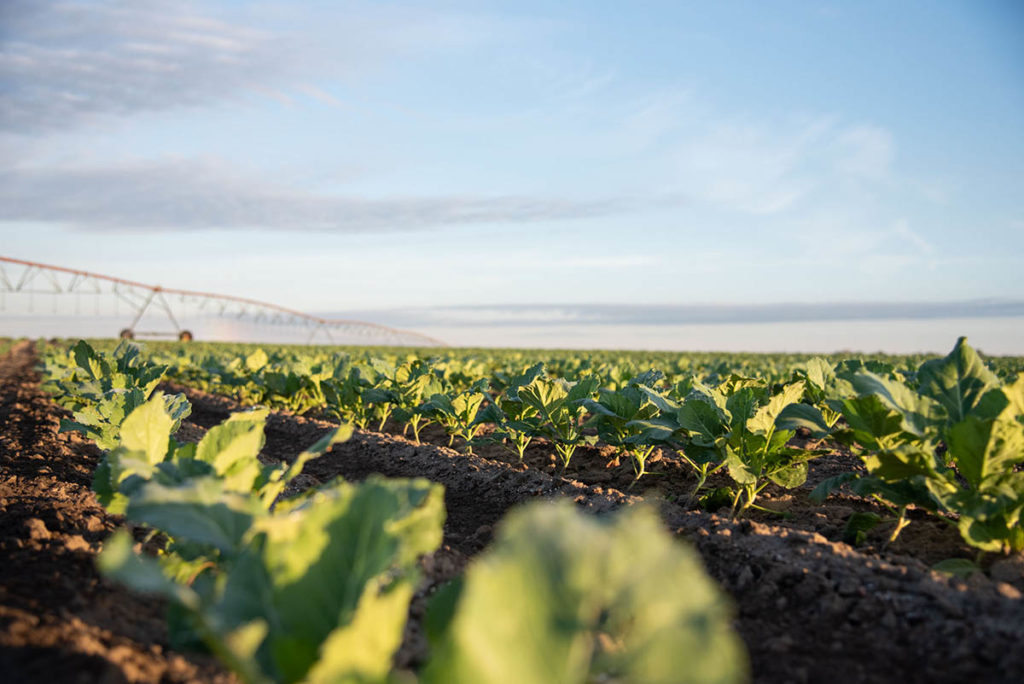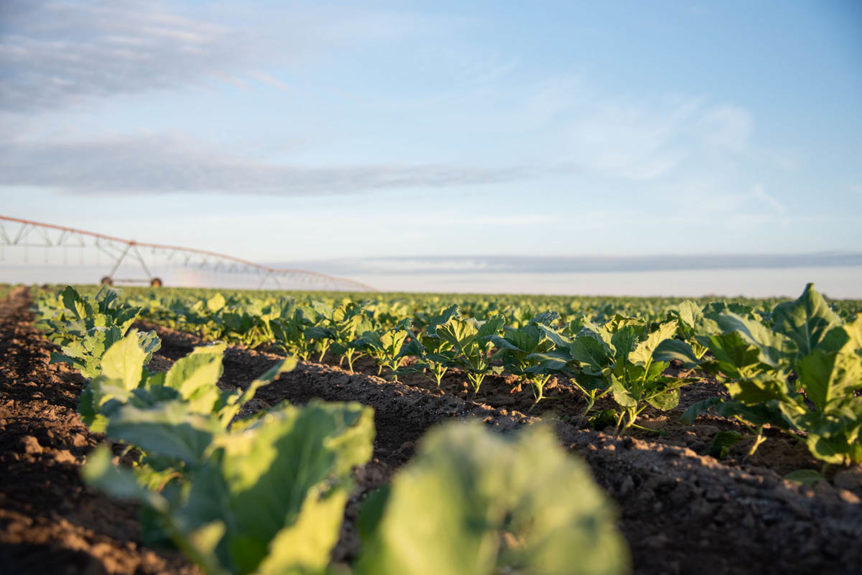
By Frank Giles
What would you do if your farm’s name was splashed across headlines nationwide in association with a food-borne illness outbreak? That’s a scary question some specialty crop growers have had to answer.
The Food Safety Modernization Act (FSMA), which was signed into law in 2011, was largely driven by food-borne illness outbreaks associated with produce. Some of the larger outbreaks had big impacts not just on farms and those who got sick, but also on produce markets.

Photos courtesy of FFVA
Farms are sometimes wrongly blamed for outbreaks, or situations are more complicated than just pointing a finger to a single source. That was the case with a Florida farm earlier this year. Product shipped to a location in Kentucky was blamed on the death of a young boy, originally citing an allergic reaction to strawberry. That would have been a very rare event, and research turned up no documented cases of it occurring in the past. But after further investigation, it turned out the child died due to fentanyl exposure. His parents were eventually charged with manslaughter.
The farm in question has a good food-safety program in place, but it didn’t protect the business from the agonizing experience of being caught up in such of an event. This scenario was the topic of a food-safety panel discussion at the Florida Fruit & Vegetable Association (FFVA) annual convention in September. Out of respect to privacy, the farm will not be named here, but the advice shared from food-safety experts on the panel is something all specialty crop growers can benefit from knowing.
Christina Morton, FFVA director of communications, moderated the panel. Other participants included Martha Roberts, a pioneer in food safety and founder of Roberts and Associates; Morgan Madison, FFVA food safety and sustainability manager; and Kelly Vance, assistant director of the Food Safety Division of the Florida Department of Agriculture and Consumer Services (FDACS).
The Urge to Find Fault
The grower involved in the Kentucky incident quickly realized the farm needed help as the story made national news in a matter of a couple of days. The farm reached out to FFVA, which it is a member of, for help in responding to the issue. The panelists all agreed that a critical first step is to reach out to partners when a food-safety crisis hits.
“It was striking the speed at which it all happened,” Vance said. “There were conclusions drawn with a lack of information. I fully appreciate the immense pressure the authorities in Kentucky felt and immediate need to release information as soon as possible, but that also comes with a balancing act of what the release of that information does to the public and the industry.”
Roberts, who has trained many farmers in food safety and has witnessed the fallout of outbreaks, shared her perspective. She said the response is often part of human nature and the desire to find a party at fault. That impulse is felt by the agencies charged with regulating food safety and is amplified by the media reporting the story.
“Oftentimes, particularly when there is a tragic situation like an illness or death, people involved are pressured to find someone to blame,” she said.
In another example of human nature, some people who saw media reports of the alleged allergic reaction also claimed to have been sickened by the product. This only lent credibility to the story when details and accurate information were not available.
Build Your Contacts
Whether it is a real food-borne illness outbreak or a false alarm, the initial results will be the same. It is not a period to be asking who you need to contact. Those relationships need to be established beforehand.
The grower involved in this case said having those relationships was a silver lining in an otherwise horrific situation. They said their biggest lesson from the event was not to be afraid to ask for help when you need it. And knowing who the partners are who can help you is so important to enable fast action when it is needed.
“You must pursue these relationships up front, so when a crisis hits, you know who to call to help deal with the situation,” Roberts said. “Beyond relationships with your associations like FFVA, I can think of seven people that need to be in your speed dial on your phone, to be able to help you address a situation like this.”
Among those people are food safety personnel in state departments of agriculture, local inspectors, experts at universities and local law enforcement.
Vance explained the food-safety roles of FDACS. “FDACS has two divisions you might interact with. The Division of Fruit and Vegetables might be called to do an audit of your farm to identify hazards your farm might be susceptible to and how to mitigate those hazards,” she said. “The Division of Food Safety is tasked with regulation of commercial food that is in intrastate or interstate commerce, and the Division of Food Safety also regulates food establishments through permitting and inspections. And we regulate food products through product evaluation and lab analysis.”
FDACS also provides an On-Farm Readiness Review service where agency personnel visit farms to help growers ensure they are compliant with FSMA regulations and are prepared for FSMA inspections. Other state departments of agriculture have similar programs.
“The state agriculture department believes very much in a teamwork approach with growers, and industry associations also can help growers with guidance on solutions,” Roberts said. “If something goes wrong, the state is there to help you by providing suggested solutions to improve safety and how to correct problems.”
FDA Focus
The FDA’s role is different, focusing more strictly on regulation and enforcement. FDA inspects to assure compliance with federal regulations and law. FDA is restricted from advising growers on how to fix a food-safety problem.
“The FDA is responsible for food that is involved in interstate commerce,” Roberts said. “In today’s world, it is rare to have a food product that is not in interstate commerce to some degree.”
Agencies like FDA also are under immense pressure to “fix” a food-borne illness outbreak. Unfortunately, that often starts with identifying the source of the problem. That’s why it is important for growers to be well prepared with a solid food-safety program and an action plan if any problem is tied to their farm.
“FFVA has been very proactive to be sure we are communicating with FDA and have provided agency personnel tours at different types of farms to ensure they understand how food is produced on those operations,” Roberts said. “That is so important. We would like to have better communication and transparency with the federal government and continue to work cooperatively on it.”
Be Prepared
The panel also addressed “what ifs” to give growers an idea of what they would need to be prepared for in the event of an outbreak investigation. Vance said preparation and cooperation are key.
“When FDACS (Division of Food Safety) gets involved, there are a lot of questions trying to figure out what is happening,” she said. “You need all the documents on the front end. Things like food safety plans, harvest dates, shipping dates, cleaning schedules and all the relevant information. Sometimes these questions can be overwhelming. So, if you can have this well documented and organized, it is incredibly helpful and allows the inspector to get to the meat of the situation much quicker.”
That preparation is equally important when FDA inspectors show up seeking information.
“We all agree we are in the business of producing a safe food supply and protecting public health, but you must also protect your own business,” Roberts said. “That’s where having records proving exactly what you have done is so important. And being educated and well trained in food safety is critical.”
Roberts stressed the simple formula of “who, what, when, where and why” in food safety. She added that every individual (who) on the farm needs to know exactly what their food-safety role is, when it is to be done and where to conduct it. It should be confirmed often that they are performing those duties. And most important is why they are required to do a certain food-safety task. Every employee must know why they are doing these things to protect the public and the farm. It is important everyone understands lives are potentially at stake if mistakes are made. Taking an eye off the ball even for a short time can allow a food-safety problem to arise.
Roberts advised growers to practice for inspections and potential crises on their farm. To prevent, you have to be prepared.










